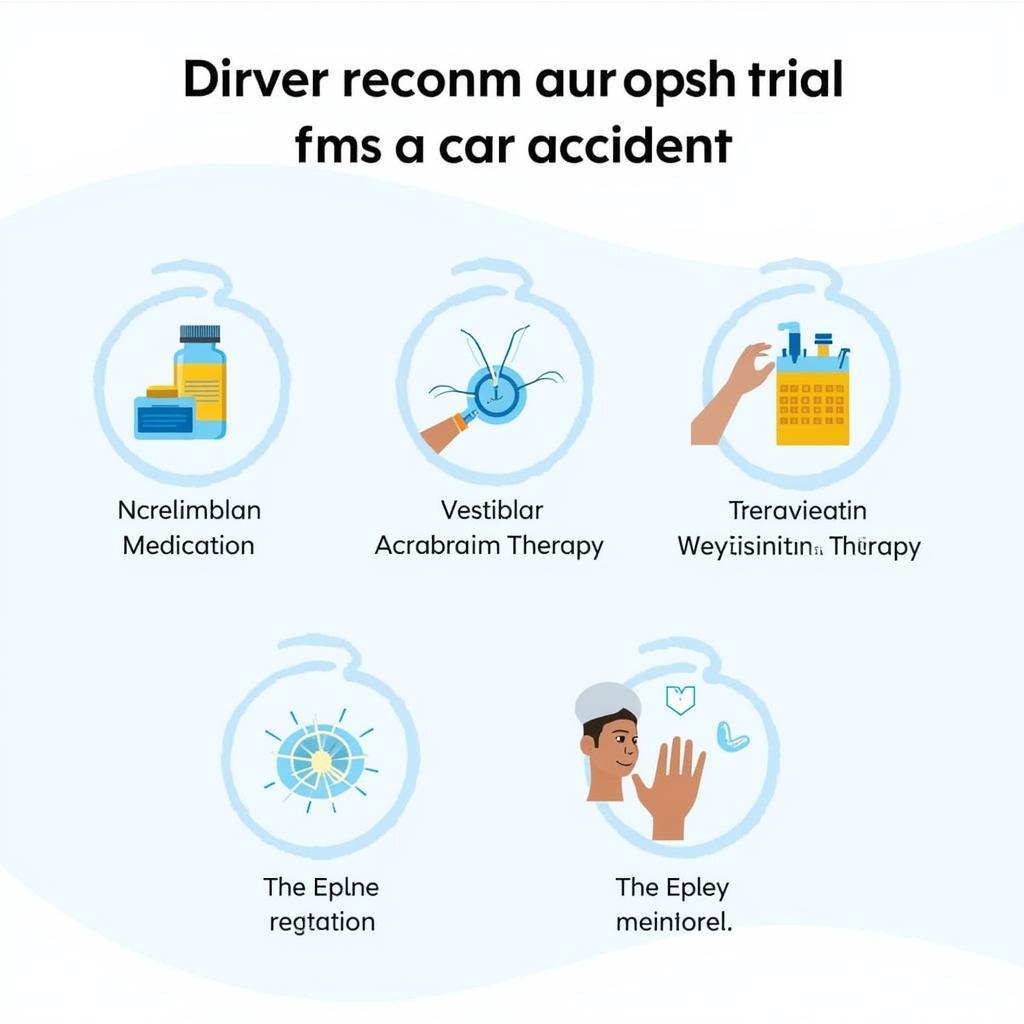Inner ear problems after a car accident can be debilitating and often overlooked. This guide provides valuable insights into the connection between car accidents and inner ear issues, offering practical advice for diagnosis, treatment, and management.
Understanding the Link Between Car Accidents and Inner Ear Problems
Car accidents, even seemingly minor ones, can cause a range of injuries, including those affecting the delicate structures of the inner ear. The force of impact can lead to trauma, such as fractures, dislocations, or damage to the inner ear’s sensory organs. Whiplash, a common injury in rear-end collisions, can also disrupt the inner ear’s balance system. This can manifest as various symptoms, including dizziness, vertigo, tinnitus (ringing in the ears), hearing loss, and difficulty with balance.
How Car Accident Trauma Affects the Inner Ear
The inner ear, responsible for both hearing and balance, is particularly vulnerable during a car accident. The sudden deceleration and jarring movements can cause:
- Benign Paroxysmal Positional Vertigo (BPPV): This occurs when small calcium crystals become dislodged and interfere with the inner ear’s balance mechanisms.
- Perilymph Fistula: A tear between the middle and inner ear can leak fluid, affecting both hearing and balance.
- Damage to the Vestibular Nerve: This nerve transmits balance information from the inner ear to the brain. Damage can cause persistent dizziness and vertigo.
- Tinnitus: This often presents as a ringing, buzzing, or hissing sound in the ears and can be triggered by head trauma.
Identifying Inner Ear Problems After a Car Accident
Recognizing the symptoms of inner ear problems is crucial for prompt diagnosis and treatment. If you experience any of the following after a car accident, seek medical attention immediately:
- Dizziness or vertigo
- Hearing loss or changes in hearing
- Tinnitus (ringing, buzzing, or hissing in the ears)
- Loss of balance or unsteady gait
- Nausea or vomiting
- Feeling of fullness or pressure in the ear
What to Expect During Diagnosis
A medical professional will conduct a thorough evaluation, including:
- Reviewing your medical history: This will include details about the accident and your symptoms.
- Physical examination: This may involve checking your ear, nose, and throat, as well as assessing your balance and coordination.
- Hearing tests: These assess the extent of any hearing loss.
- Balance tests: These evaluate the function of your vestibular system.
- Imaging studies: CT scans or MRIs may be necessary to rule out other conditions or assess the extent of inner ear damage.
Treatment Options for Inner Ear Problems
Treatment for inner ear problems varies depending on the specific condition. Options include:
- Vestibular Rehabilitation Therapy (VRT): This type of physical therapy helps retrain the brain to compensate for inner ear imbalances.
- Medications: Certain medications can help manage symptoms like dizziness, nausea, and vertigo.
- Epley Maneuver: This repositioning technique can effectively treat BPPV.
- Surgery: In rare cases, surgery may be necessary to repair damage to the inner ear structures.
Long-Term Management of Inner Ear Issues
Managing inner ear problems after a car accident often requires a long-term approach. This can involve:
- Lifestyle modifications: Avoiding triggers like caffeine, alcohol, and nicotine can help manage symptoms.
- Stress management techniques: Stress can exacerbate inner ear symptoms. Relaxation techniques like yoga or meditation can be helpful.
- Ongoing monitoring: Regular check-ups with your doctor can ensure that your condition is being managed effectively.
“Early diagnosis and appropriate treatment are key to minimizing the long-term impact of inner ear problems after a car accident,” says Dr. Sarah Miller, a leading audiologist specializing in vestibular disorders. “Don’t hesitate to seek medical attention if you experience any symptoms.”
 Inner Ear Treatment Options After Car Accident
Inner Ear Treatment Options After Car Accident
Conclusion
Inner ear problems after a car accident can significantly impact your quality of life. Understanding the connection between car accidents and these issues, recognizing the symptoms, and seeking prompt medical attention are vital steps towards recovery. Remember, effective treatment and management strategies can help you regain your balance and hearing, and improve your overall well-being. Contact AutoTipPro at +1 (641) 206-8880 or visit our office at 500 N St Mary’s St, San Antonio, TX 78205, United States for expert advice and support. Don’t let inner ear problems after a car accident hold you back – take control of your health today.




Leave a Reply